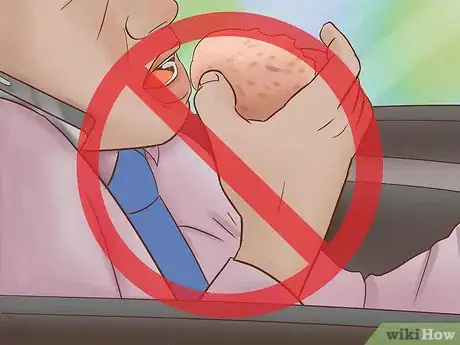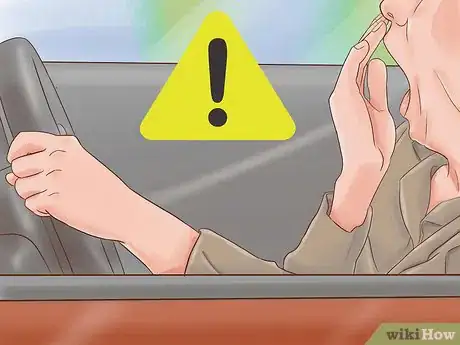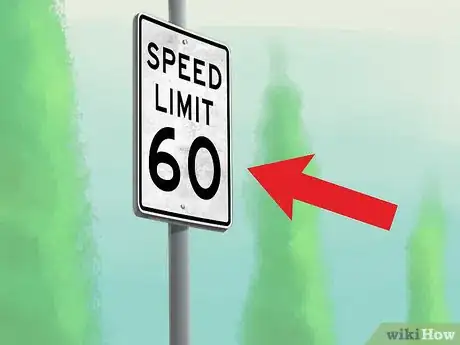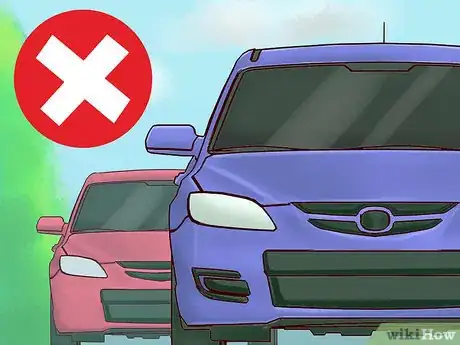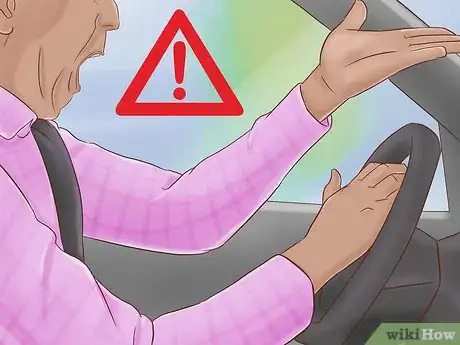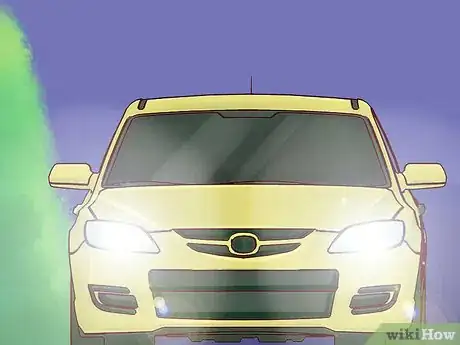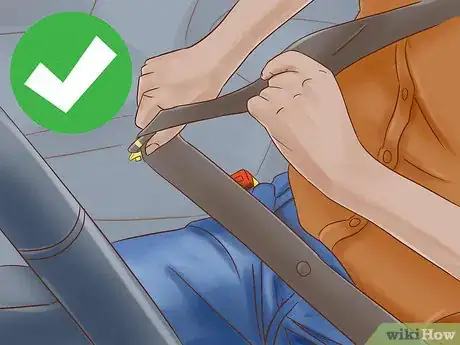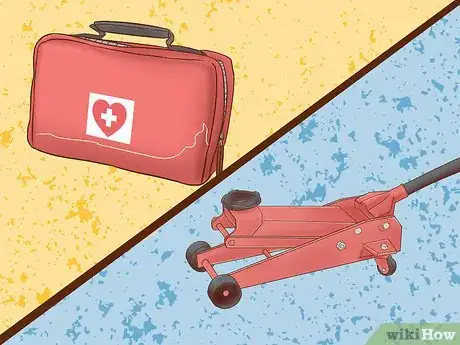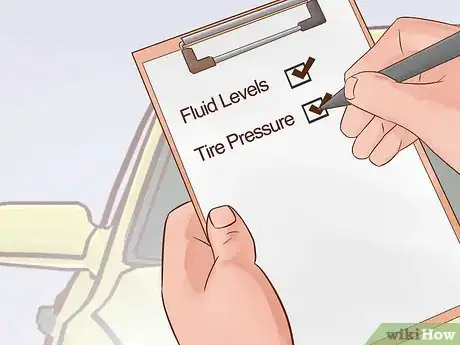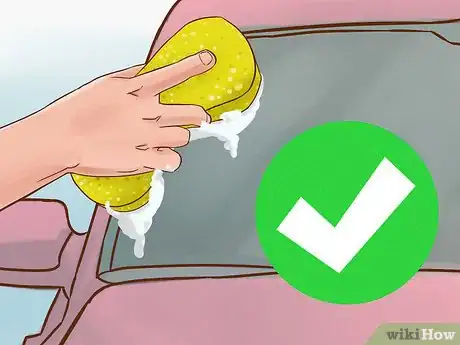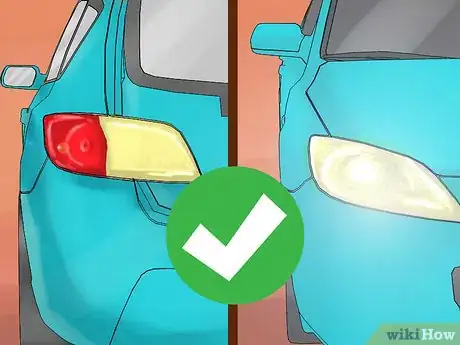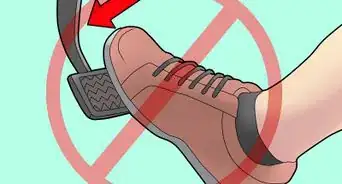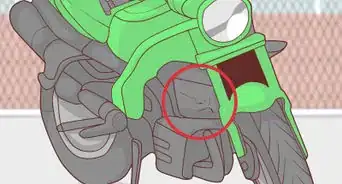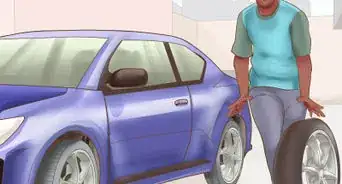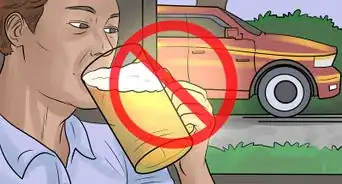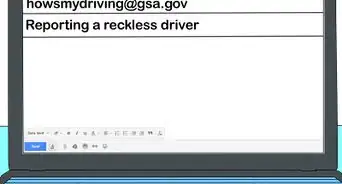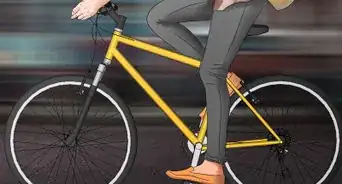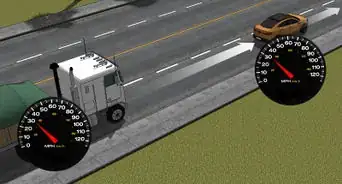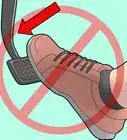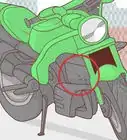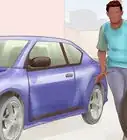This article was co-authored by American Automobile Association. The American Automobile Association (also known as "AAA" or "Triple A") is a federation of motor clubs throughout North America and a non-profit organization focused on the safety of the driving public and the future of mobility. Best known for providing its members with roadside assistance, AAA has also been providing auto repair services and insurance for auto, home, life, and business for over a century. Founded in 1902, AAA is headquartered in Heathrow, Florida.
There are 8 references cited in this article, which can be found at the bottom of the page.
wikiHow marks an article as reader-approved once it receives enough positive feedback. In this case, 95% of readers who voted found the article helpful, earning it our reader-approved status.
This article has been viewed 121,144 times.
Driving on the highway can be nerve-racking. However, by familiarizing yourself with basic highway safety, you can help ensure you get from point A to point B with minimized risk. By paying attention to the road, practicing defensive driving, and taking care of your vehicle, you can feel safe and confident behind the wheel.
Steps
Paying Attention to the Road
-
1
-
2Pull over if you’re tired. If you’re half asleep, it will be difficult for you to concentrate on driving. If you catch your eyes starting to close, or you drift, this is a sign you shouldn’t be on the road anymore. Find a rest stop or a hotel so you don’t endanger yourself or others.[3]Advertisement
-
3Check your mirrors regularly. This will help you to be continuously aware of the drivers that are beside and behind you. Make sure your mirrors are properly positioned to minimize blind spots.[4]
-
4Follow posted traffic regulations. Keep an eye out for all traffic notifications, such as speed limit, safety, construction, and hazard signs. These will help guide your driving and lower your risk of accidents.[5]
Driving Defensively
-
1Avoid tailgating other vehicles.[6] Getting too close to other cars can instigate road rage, and can also lead to accidents when people have to brake quickly or lose control of their car. Try to leave at least a 3-second gap between you and the car in front of you.
-
2Distance yourself from erratic or aggressive drivers. If a car is hectically changing lanes, fluctuating speeds repeatedly, swerving, or tailgating, try to put as much space as possible between you and them.[7]
-
3Make yourself visible to other drivers. Use your headlights whenever the road and other cars are hard to see. Anytime it is foggy, overcast, raining, sleeting, snowing, dusk, dawn, or dark, your headlights will help you see others, and others see you. Make sure to use your turn signal any time you are changing lanes.[8] [9]
-
4Make sure everyone in your vehicle is wearing a seatbelt. Not wearing a seatbelt puts you at an enormously higher risk for death or injury. Seatbelts cut your risk for accident fatality by 45%, and cut your risk for injury in half.[10]
-
5Prepare for accidents or mechanical issues. Keeping a first aid kit, jumper cables, a fire extinguisher, a jack, and a spare tire can help you handle a wreck or a car issue. Make sure you have an emergency contact in your phone just in case.[11]
Taking Care of Your Vehicle
-
1Take your car for an inspection before any long trips. Have your mechanic check your fluid levels, tire pressure, and do an overall diagnostic of your car to make sure it’s safe for travel. Be sure to repair any mechanical problems that could put you in danger before driving.[12]
-
2Wash your windshield, windows, and mirrors. Dirty glass makes it difficult to see outside of your car while you are driving, increasing your risk of not seeing something.[13]
-
3Ensure your lights all work. This includes your low beams, high beams, brake lights, taillights, and turn signals. Check to make sure their encasements are clean. Having all of your lights in working order is extremely important for overall visibility on the road.[14]
Expert Q&A
-
QuestionWhat precautions should I take while I'm driving?
 Saul Jaeger, MSSaul Jaeger is a Police Officer and Captain of the Mountain View, California Police Department (MVPD). Saul has over 17 years of experience as a patrol officer, field training officer, traffic officer, detective, hostage negotiator, and as the traffic unit’s sergeant and Public Information Officer for the MVPD. At the MVPD, in addition to commanding the Field Operations Division, Saul has also led the Communications Center (dispatch) and the Crisis Negotiation Team. He earned an MS in Emergency Services Management from the California State University, Long Beach in 2008 and a BS in Administration of Justice from the University of Phoenix in 2006. He also earned a Corporate Innovation LEAD Certificate from the Stanford University Graduate School of Business in 2018.
Saul Jaeger, MSSaul Jaeger is a Police Officer and Captain of the Mountain View, California Police Department (MVPD). Saul has over 17 years of experience as a patrol officer, field training officer, traffic officer, detective, hostage negotiator, and as the traffic unit’s sergeant and Public Information Officer for the MVPD. At the MVPD, in addition to commanding the Field Operations Division, Saul has also led the Communications Center (dispatch) and the Crisis Negotiation Team. He earned an MS in Emergency Services Management from the California State University, Long Beach in 2008 and a BS in Administration of Justice from the University of Phoenix in 2006. He also earned a Corporate Innovation LEAD Certificate from the Stanford University Graduate School of Business in 2018.
Police Captain, Mountain View Police Department Make sure you don't distract yourself while you're driving. Pay attention to what you're doing and don't use your phone, eat, or mess around with your radio.
Make sure you don't distract yourself while you're driving. Pay attention to what you're doing and don't use your phone, eat, or mess around with your radio. -
QuestionWhat do I do if I'm being tailgated?
 Community AnswerIf possible, you should change lanes and allow the vehicle behind you to pass. You should not tap your brakes repeatedly, as the person behind you may catch on, and may not stop if an emergency arises.
Community AnswerIf possible, you should change lanes and allow the vehicle behind you to pass. You should not tap your brakes repeatedly, as the person behind you may catch on, and may not stop if an emergency arises. -
QuestionHow do I change lanes during heavy traffic?
 Community AnswerTurn on your blinker to indicate your intent to other motorists. Patiently wait for the them to give you the required space to slowly and safely move your car into the lane you desire.
Community AnswerTurn on your blinker to indicate your intent to other motorists. Patiently wait for the them to give you the required space to slowly and safely move your car into the lane you desire.
References
- ↑ Saul Jaeger, MS. Police Captain, Mountain View Police Department. Expert Interview. 21 February 2020.
- ↑ https://blog.allstate.com/highway-driving-safety-tips/
- ↑ https://www.nationwide.com/driving-safety-tips.jsp
- ↑ https://blog.allstate.com/highway-driving-safety-tips/
- ↑ https://blog.allstate.com/highway-driving-safety-tips/
- ↑ Saul Jaeger, MS. Police Captain, Mountain View Police Department. Expert Interview. 21 February 2020.
- ↑ https://www.titlemax.com/discovery-center/the-ultimate-road-trip/road-rage-risk-and-caution/
- ↑ Saul Jaeger, MS. Police Captain, Mountain View Police Department. Expert Interview. 21 February 2020.
- ↑ https://www.dmv.org/how-to-guides/when-to-use-headlights.php
- ↑ https://www.edgarsnyder.com/car-accident/defective-products/seat-belts/seat-belts-statistics.html
- ↑ https://www.dmv.org/how-to-guides/emergency-kit.php
- ↑ https://www.dmv.org/how-to-guides/vehicle-maintenance.php
- ↑ https://blog.allstate.com/highway-driving-safety-tips/
- ↑ https://blog.allstate.com/highway-driving-safety-tips/
